I’ve long been curious to know more about the ‘Whites of Appleton’. It’s a name that keeps cropping up when you live in Oxford and while most residents will never see their handiwork close-up, they cannot fail to hear it. For this is the family operation responsible for the upkeep, restoration and hanging (in fact everything bar the casting) of most of the church and college chapel bells which give the city its familiar soundscape. No small feat when you consider that the only place outside London with more bells than us is Bristol. And the work doesn’t end here. They also look after the chimes of churches and cathedrals up and down the country, including Westminster Abbey and Windsor Castle.
They are moreover the oldest continuously trading bell-hanging company in Britain. And as they will be 200 years old this year, it seems a fitting time to be making the pilgrimage with contributing photographer John Milnes to meet Brian, the fifth generation of the White clan at his workshop in Appleton, five miles south-west of Oxford. Taking the busy A420 Swindon road, we pull in en route at The Greyhound, a pretty old coaching inn nestled on the corner of the junction which takes you into the tiny 11th century village of Besselsleigh. We want to pay our respects to Alfred White, the founder of the family firm, who was its landlord in the days when this part of the world was still Berkshire long before the boundary changes in 1974 sucked it into Oxfordshire. There’s a blue plaque commemorating him on the front wall. Born down the road in Appleton in 1804, he was fourteen when the local Lord of the Manor, Robert Southby decided to replace the three bells hanging in the village Church of St Laurence with a new ring of six, to appease the locals for enclosing the village green. On their arrival, Southby paid for a great feast for the community in which the treble bell was upturned and filled with beer, an event known as ‘4 March Day’ that will be celebrated fortuitously this weekend as it has been annually ever since 1818.
Alfred went on to become one of the six boys taught to ring the new bells by a specially brought-in expert bellringer from Oxford called Richard Pitman, and then recognising there would always be a need for bell frames and someone to hang them he set up his own business, alongside his work as a blacksmith and a pub landlord. It was his son Frederick who moved the firm to Appleton, now a thriving village with a community shop and post office (the coffee and home-made cake thoroughly recommended), a pub, The Plough advertising food and quiz nights, and a church, in the yard of which Alfred and many of his family are buried. Though he lived and worked at The Greyhound, Appleton and St Laurence always remained central to Alfred’s life. The family still hold his handwritten compositions from when he conducted the village band. It is Alfred who upgraded the six bells to a ring of ten, adding two in 1854 building a special sound lantern atop the tower to hold them, and two in 1861, for which he welded a wrought iron band which was wrapped around the belfry to hold the extra weight. Apparently with binoculars you can see his initials – AW – stamped into the metalwork. As they are also my own, I feel a special connection. And the need, when I have more time, to return to corroborate.
Brian joined his Uncle Frank, Albert’s great grandson, at the company after leaving school at 18 in 1958 and has worked here ever since. It’s he who added the great barn of the workshop alongside the old stable building that houses the carpentry side of things. It’s a proper industrial space, smelling of metal and wood, chains and clappers lining the walls, benches filled with tools, and large pieces of engineering equipment. Gone are the days when welding was done by anvil and sledgehammer, the forge pumped by hand bellows, and holes tunnelled with a hand rachet. Brian shows me their latest appliance, a new tuning machine, bought after the famous Whitechapel Foundry folded. The bell gets clamped in upside down, mouth up, and a cutter bar descends and peels the metal off the interior. As you shave the bell drops in pitch, overshoot and flatten it too much then you must readjust the other bells in the peal to match. “So, you have to do it very carefully,” smiles Brian. But they can tune a bell to the accuracy of a hundredth of a semitone which is quite something.
Yet the place still has the feel of a small family run business. Graham, who is cutting new gudgeons (that’s the spindles on which the bell swings to you and me) to replace those that sheared at Worcester Cathedral on a machine that spills cascading silver metal on to the floor, has been employed here over 30 years. James, the company carpenter and who when I meet him is steam bending a piece of Ash to form the base of the wheel rim in which the bell rope runs, known in the trade as soling, has worked here for 18 years. Mark, the IT man and tuner, 25 years, and the baby of the crew Jon, five. Once you are here you clearly stay. There’s a wealth of expertise, skill and affection for the job that’s almost tangible.
“What’s so interesting about a little company like ours,” says Brian, “is that everybody is involved in everything. Nothing is boring. You get to go to places all over the country and see parts of buildings the public never go to.” Like up into the golden cross on the dome of St Pauls. There’s wooden pulley there, he tells me, still with a piece of rope attached used to pull Christopher Wren on his deathbed up on a stretcher so that he could see his masterpiece from the highest point.
And he has other tales, some closer to home and more down to earth. “When my uncle and I took the timbers out of St Peter in the East which is now Teddy Hall library, you literally couldn’t see the bells – they were four feet deep in pigeon poo. There was an old ringer used to live at Grandpont, he was Tower Captain at St Ebbe’s Church and was retired – he came on his push bike every day and took bags of the stuff away for his allotment. He couldn’t take all of it there was too much. A year afterwards he says to me, laughing, ‘I had broad beans by the plateful.’” It’s a great story which Brian delights in the telling.
Sadly they can’t save everything. There are three large bells sitting on the middle of the floor. They were taken down from St Mary’s Church in Wimbotsham, near Downham Market in Norfolk after an arson attack gutted the place. “They are cracked” Graham tells me. “We were going to weld them but what with everything being so hot they’ve lost so much of their tin content.” Bells, I am told, are 77% copper 23% tin. It’s the high tin content that gives the bell its ring. So, it looks like the voices of these beautiful ancient three-ton beasts may be lost forever.
But I do feel heartened that for as long as the Whites of Appleton are around, our nation’s bells are in safe hands. There’s an (edited) advertisement for the firm, filed under Arthur White on the Oxfordshire Blue Plaques website, from 1867. From what I can see it still rings true.
A.WHITE and Sons Bellhangers were made,
Because it was their fancy trade:
In hanging bells they take delight
To make them go with all their might.
If you’ve a peal that’s not quite right,
Just drop a line to ALFRED WHITE
And with his Sons he will come down,
Re-hang the bells and make them sound
The proper note that’s not been heard
Perhaps for as much as twenty years.
His sons the clocks and chimes can do,
Make them play tunes and keep time true.
https://www.whitesbellhangers.co.uk
Featured image at top: (from left) Jon Mills, Mark Walker, Brian White, Graham Clifton, James Sellick,
Photographs by John Milnes
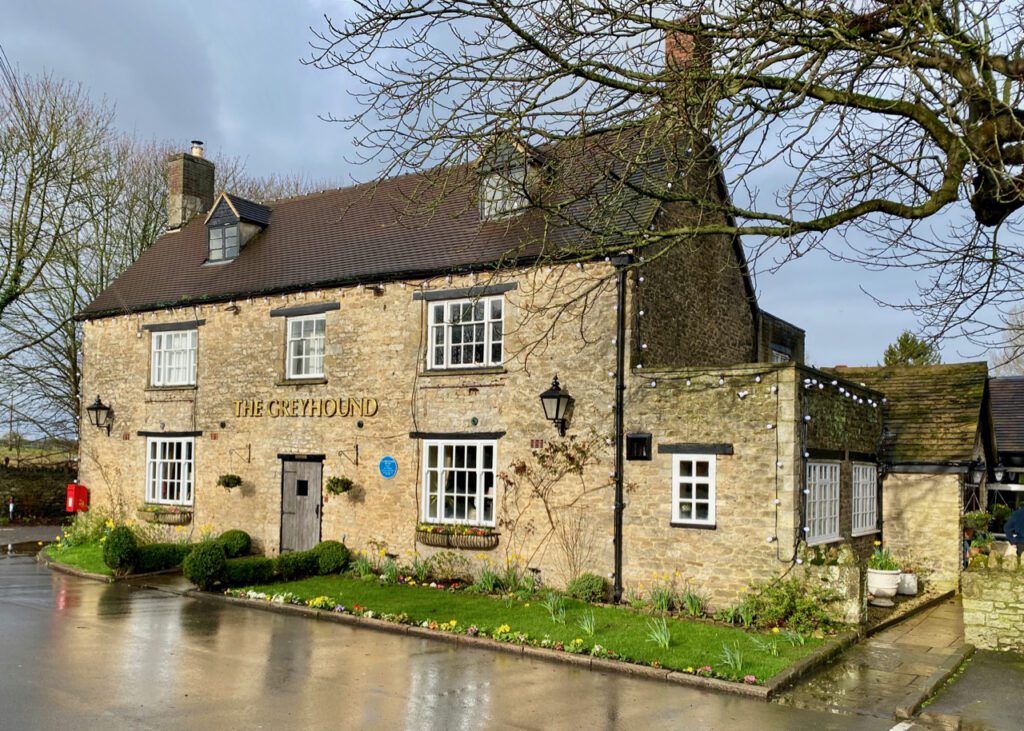
The Greyhound in Besselsleigh, now in Oxfordshire, where Alfred White lived and worked 1850-1876. He was also the local blacksmith and ran the bakery and grocers shop. He made the oak frames for the bells out the back of the pub.
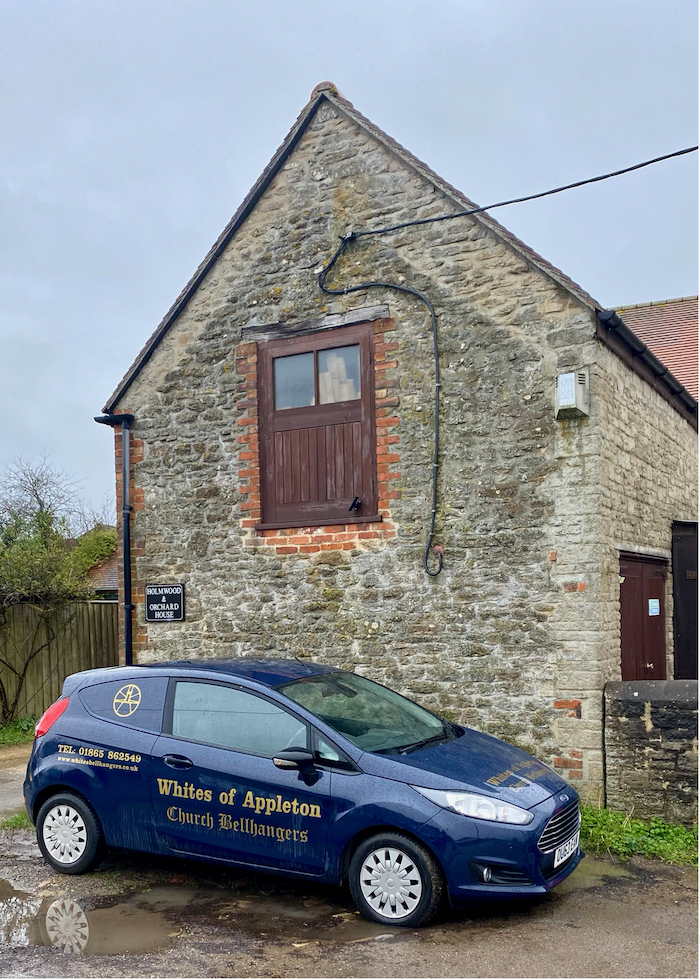
The old stable alongside the main workshop, now in Appleton, where the carpentry is done.
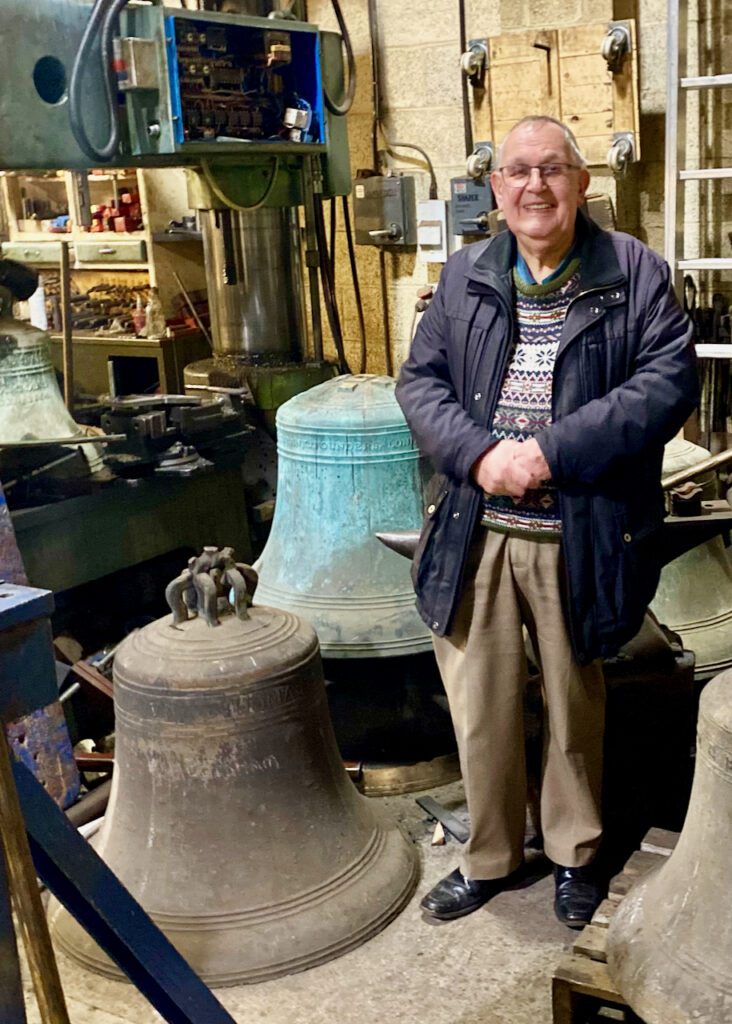
Brian in his workshop. He first went up the tower of St Laurence with his grandfather, Richard White, aged two. ‘He was a wonderful teacher’, says Brian who is still a keen bellringer.
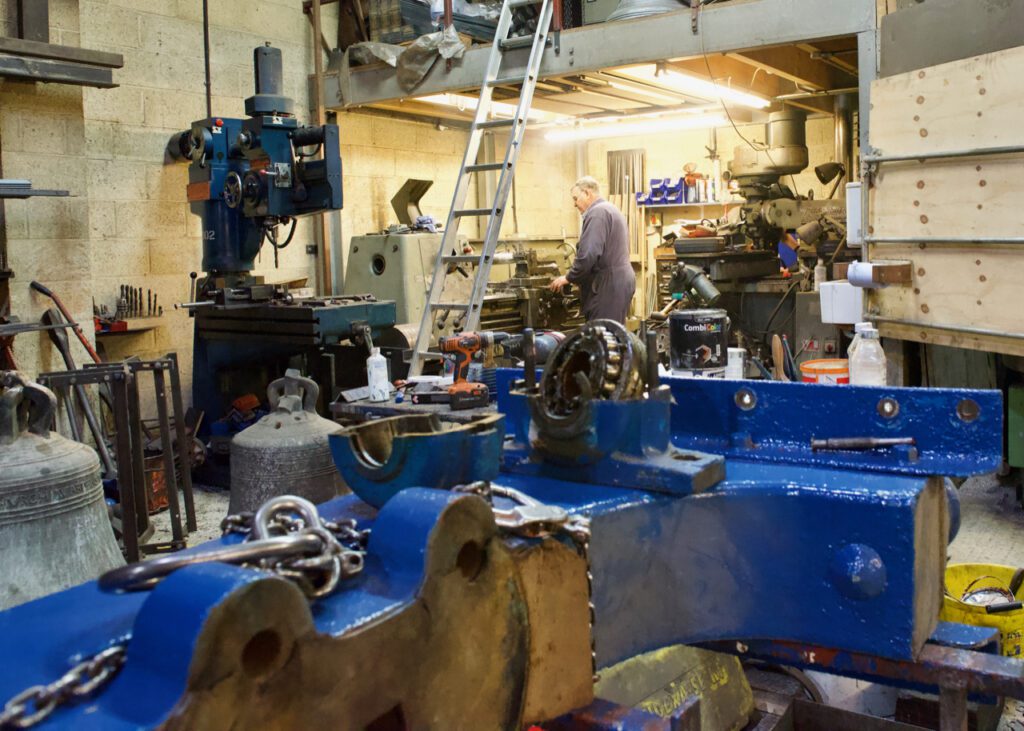
The giant headstock that holds the bells from Worcester Cathedral which the team dismantled and bought back to the workshop. It weighs nearly 3 tons.
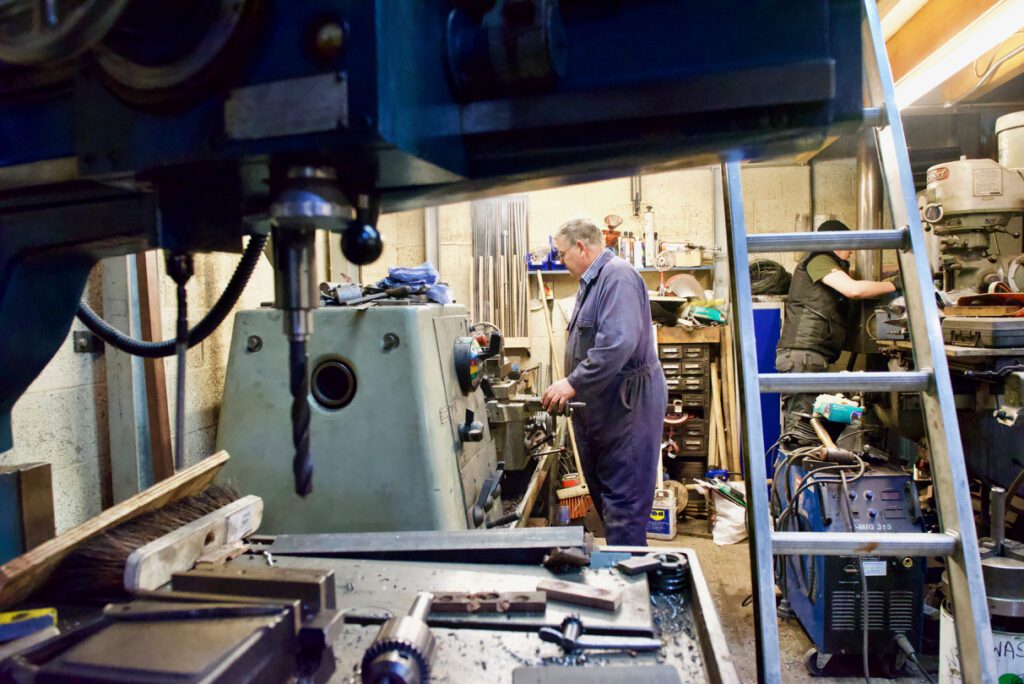
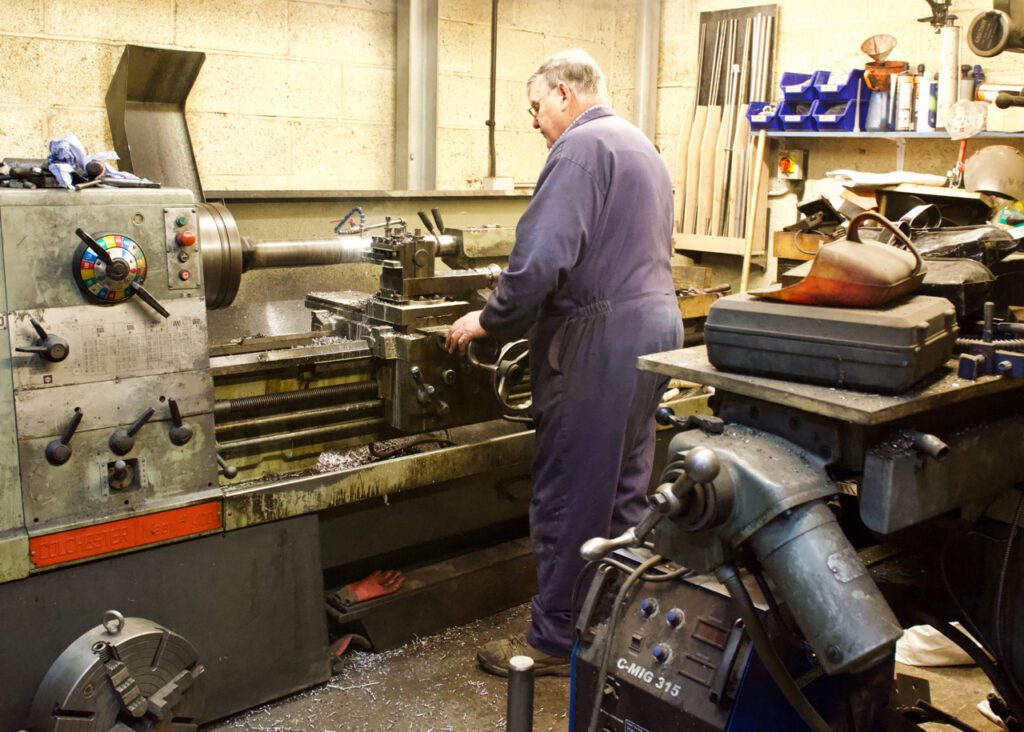
Graham making the new gudgeons – the spindles that go into the bearings on each side of the headstock.
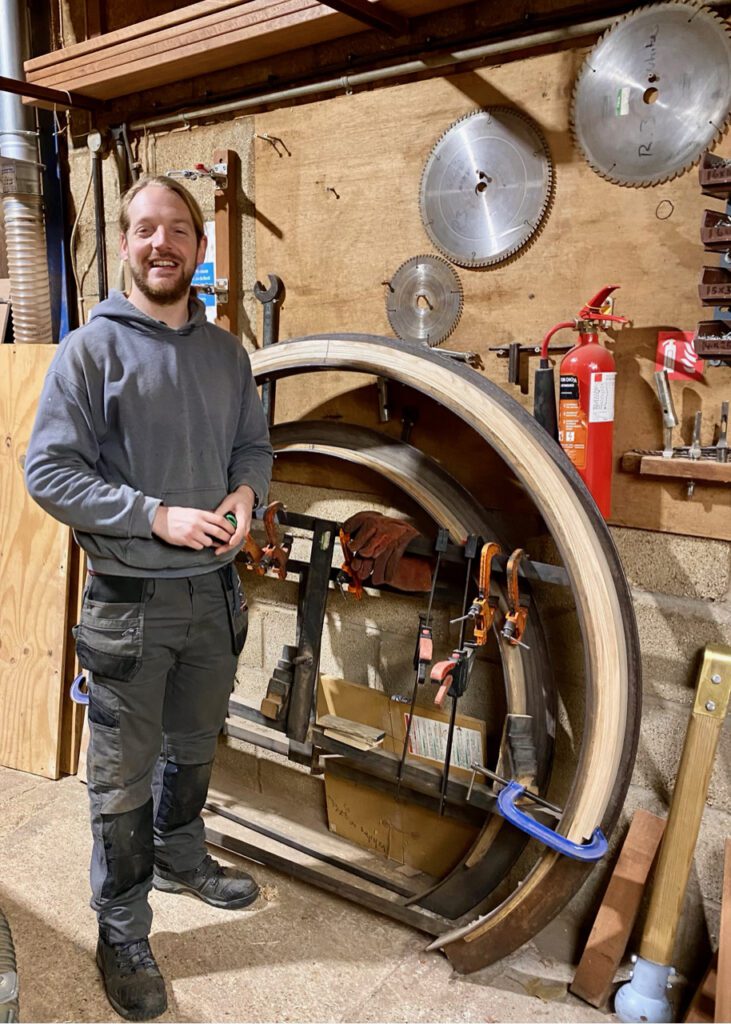
The timber James steam-bends is Ash and forms the base of the wheel rim in which the bellrope runs. In the trade it is known as the soling.

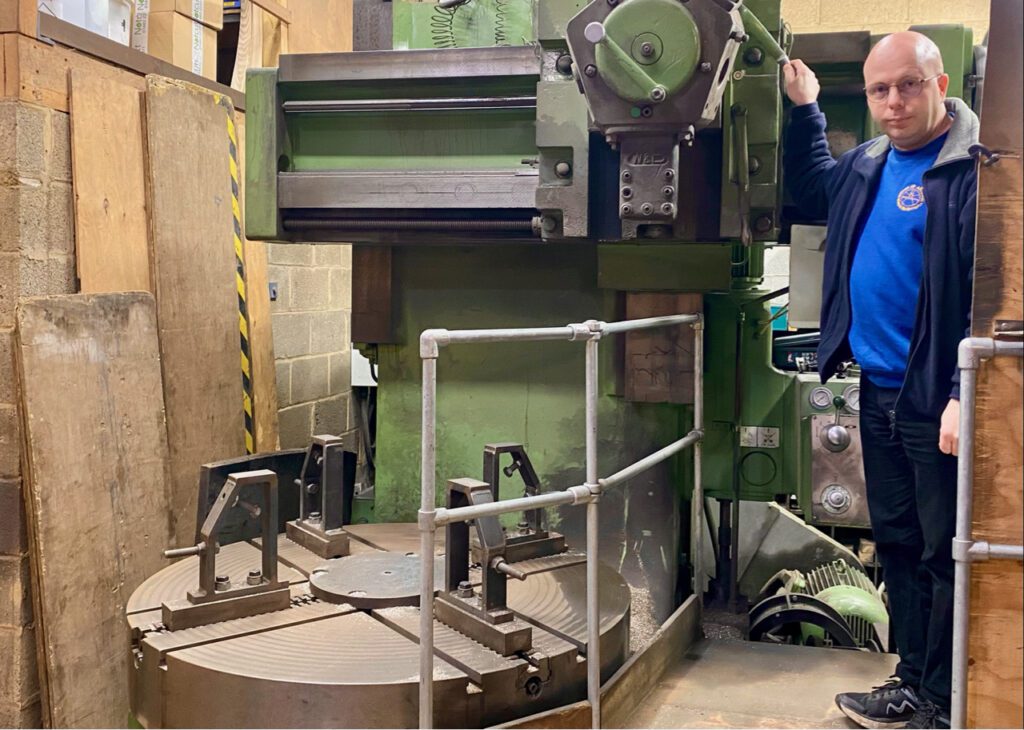
Mark with the new tuning machine, unfortunately not in action when we visited but you can see where the bell slots mouth upwards into the clamps above. ‘When the Whitechapel Foundry closed,’ says Brian, ‘their head tuner came down here and taught Mark the initial rudiments of tuning a bell and Mark took it on from there. Mark is an extremely musical lad. During lockdown he build a three pedalled manual organ in his lounge. He’s able to take a recording of any organ anywhere and he can reproduce that sound on his organ.’
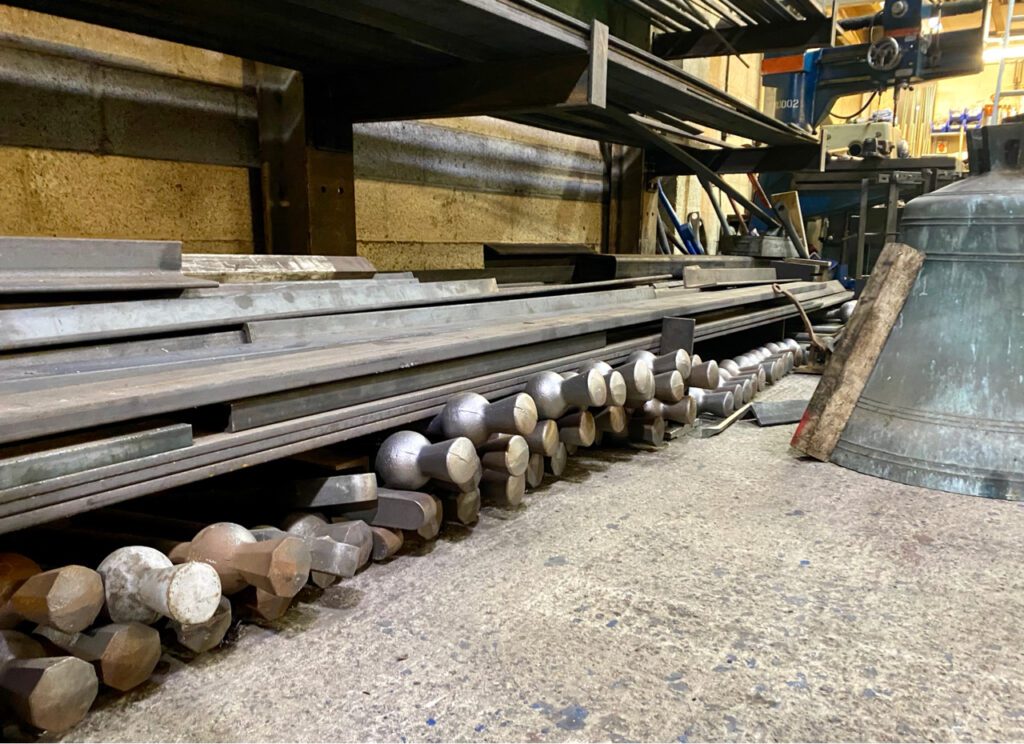
Lines of clappers. Traditionally bell clappers were made of wrought iron, and the Whites still have the skills to repair these in the forge. Wrought iron is no longer available so nowadays clappers are all cast.
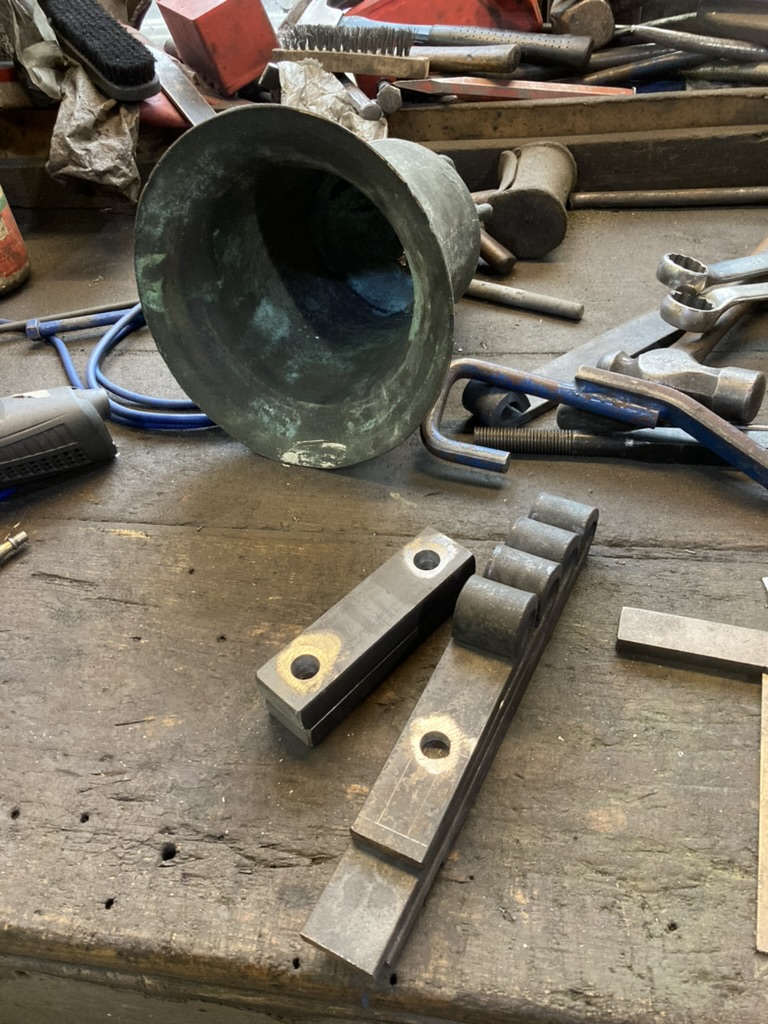
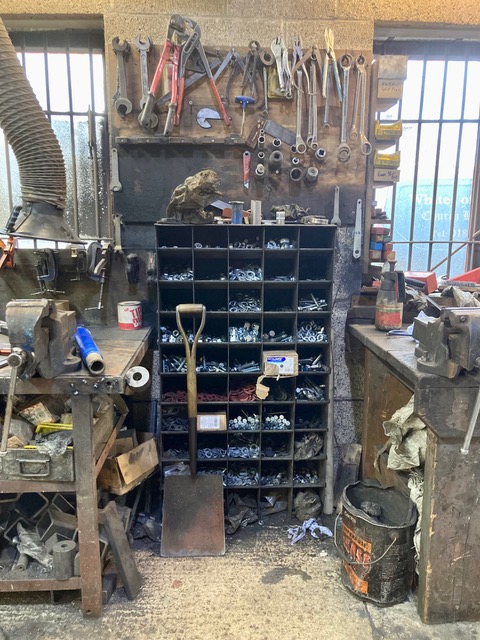
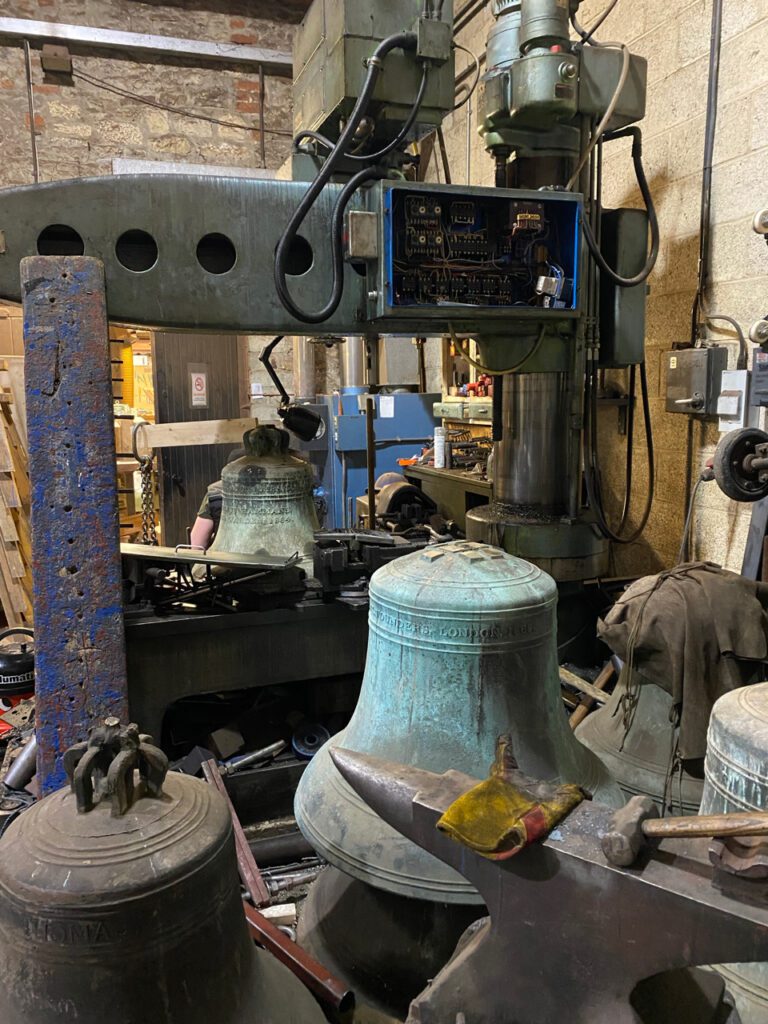
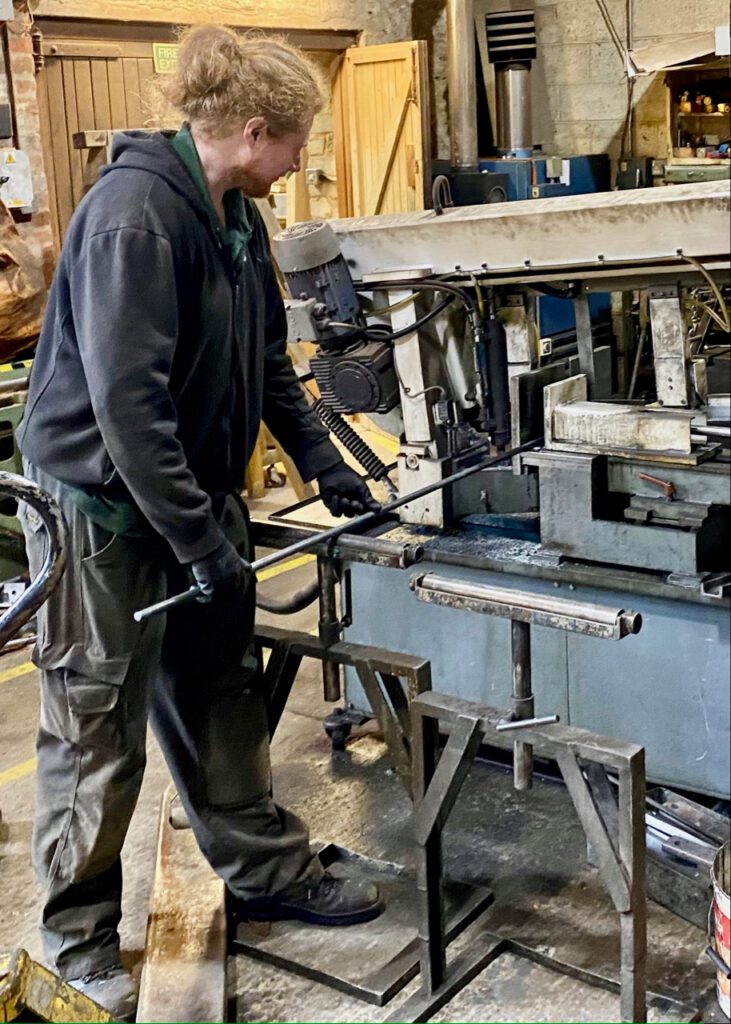
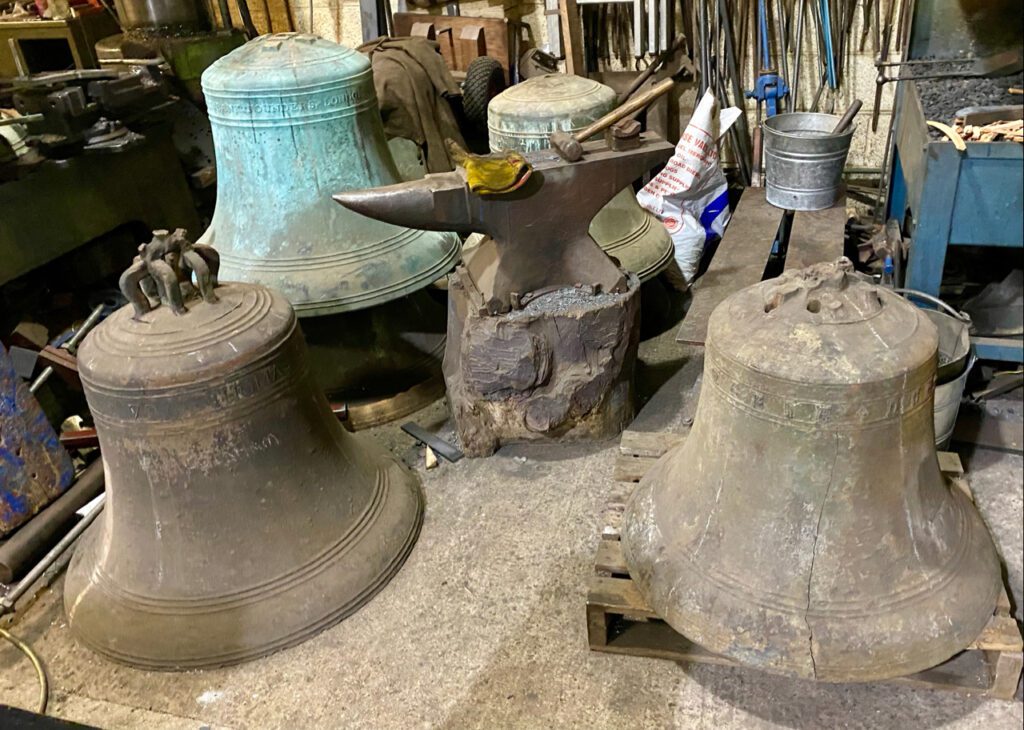
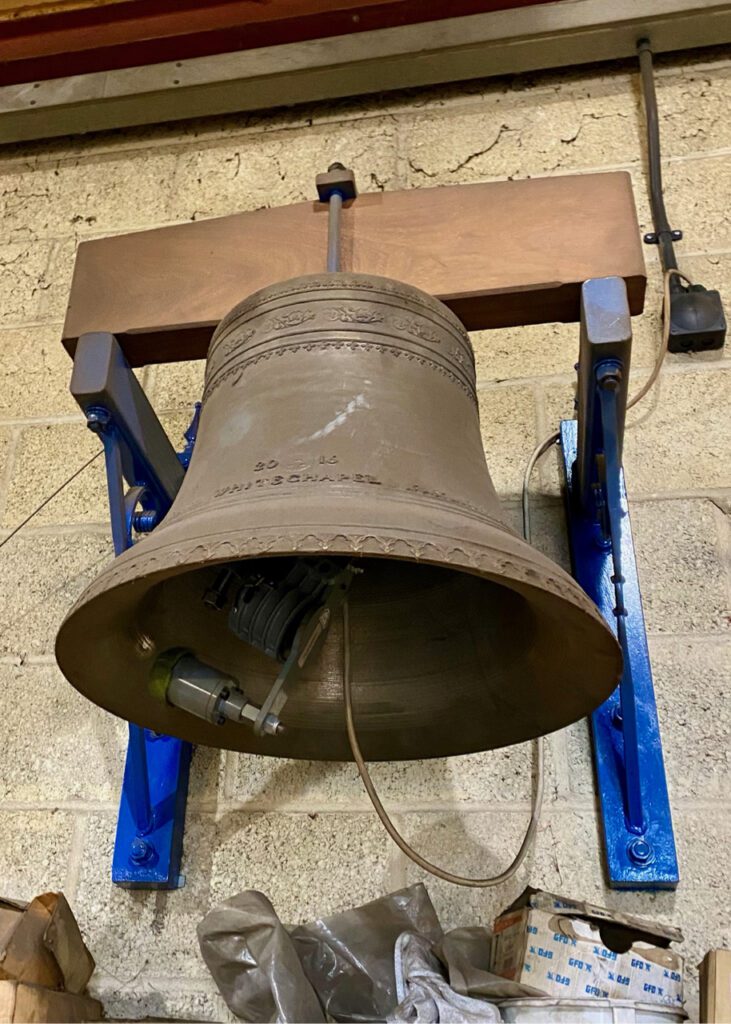
Some bells like this ‘tea bell’ in the workshop chime from a stationary position. They are bolted on the bell frame and then a hammer will ring the bell electronically. ‘The one on the wall is controlled from the office and the clock in the office is controlled from Frankfurt in Germany,’ laughs Brian.
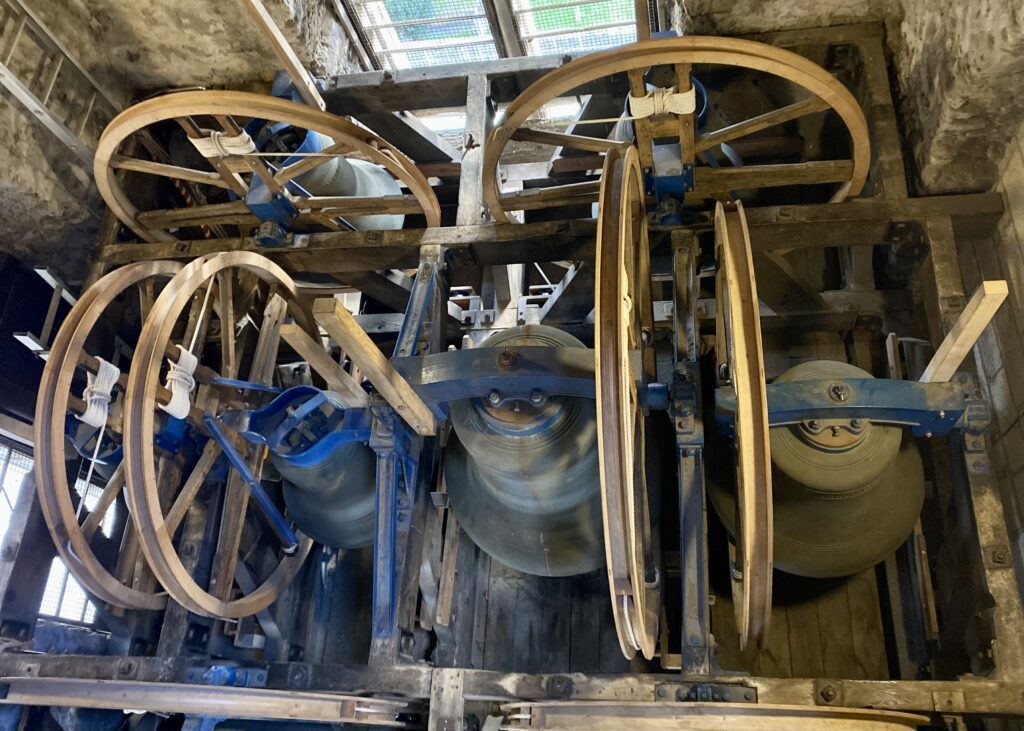
The bells from the tower of St Giles’ Church which The Oxford Sausage visited just before Christmas. The original bell frame for this ring was made by Alfred White, and they were retuned by Brian and his team in 2011. It was by all accounts a difficult job. ‘Normally you have a trapdoor down through the middle,’ says Brian, ‘as you have at St Giles but in their wisdom they went and built an organ under the tower. It’s the same at Mary Magdalen. They had to take a window out, have scaffolding, and take the bells out sideways through the window and down.’ You can tell the rehanging of the bells was done by the Whites of Appleton by the blue they use on the paintwork. It’s known as ‘White’s Blue’ in the trade. Brian introduced the colour after they started using Iroco wood instead of Oak to make the bell frames. ‘I thought that looks really nice against this particular timber’.
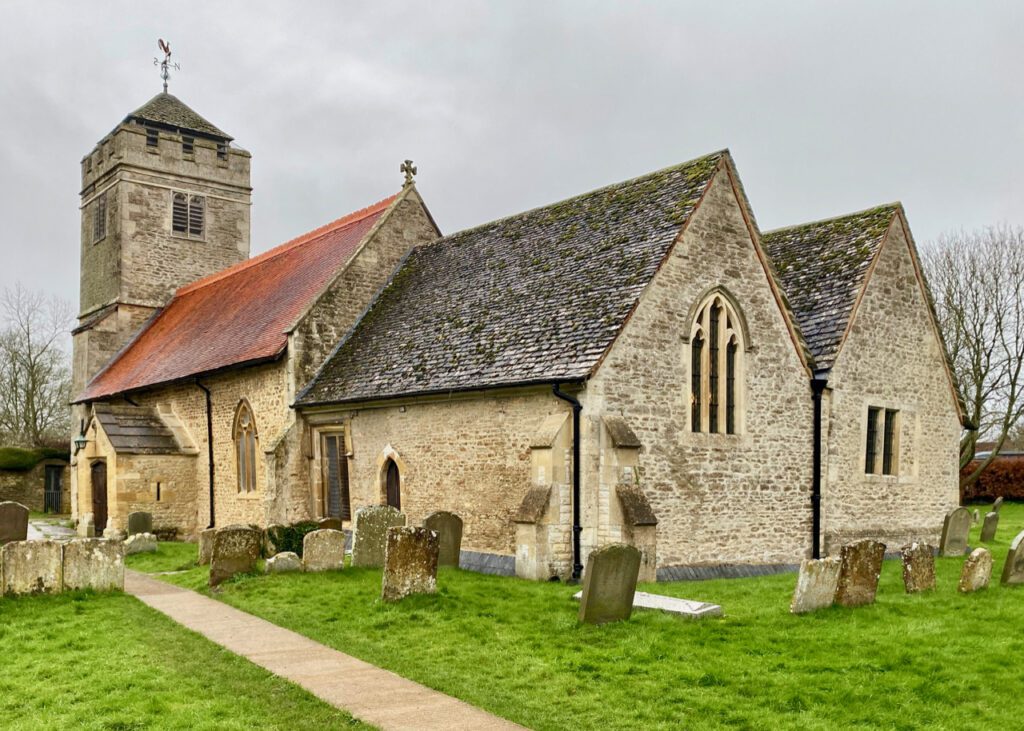
The Church of St Laurence, Appleton
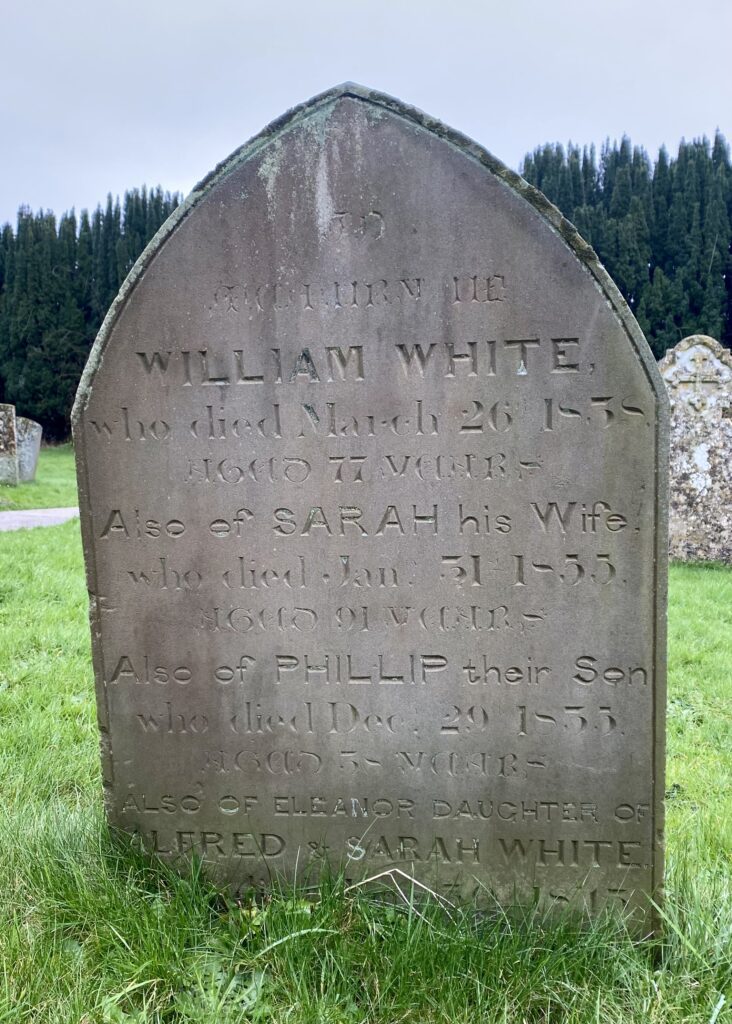
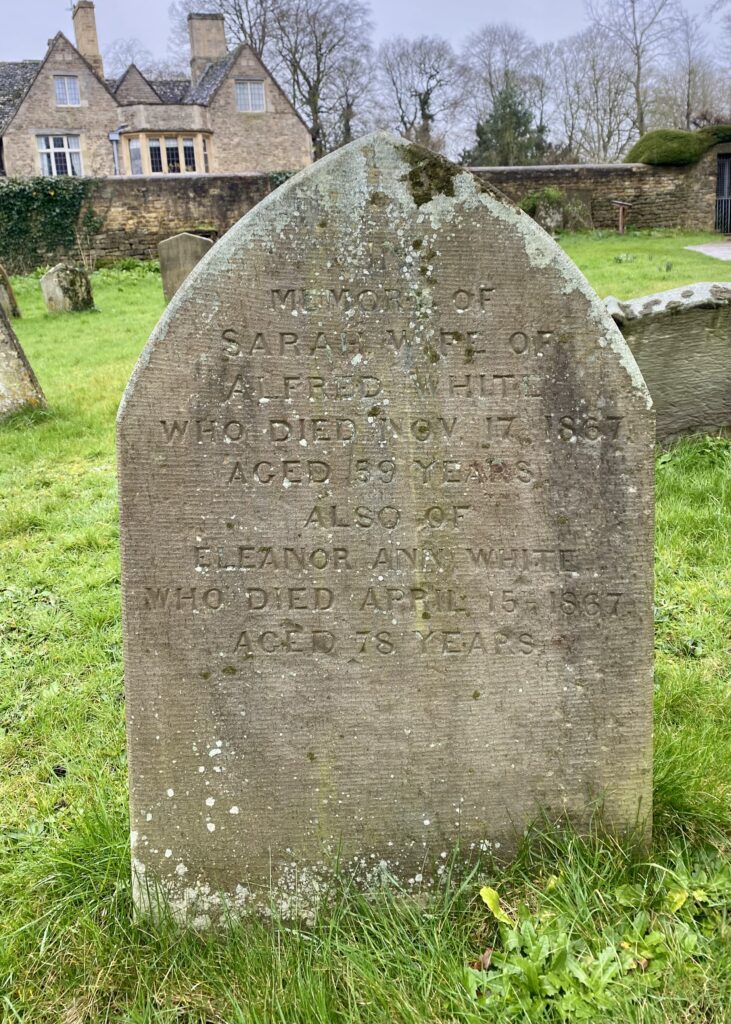
The graves of William White, Alfred’s father and Sarah White, Alfred’s wife in the graveyard.
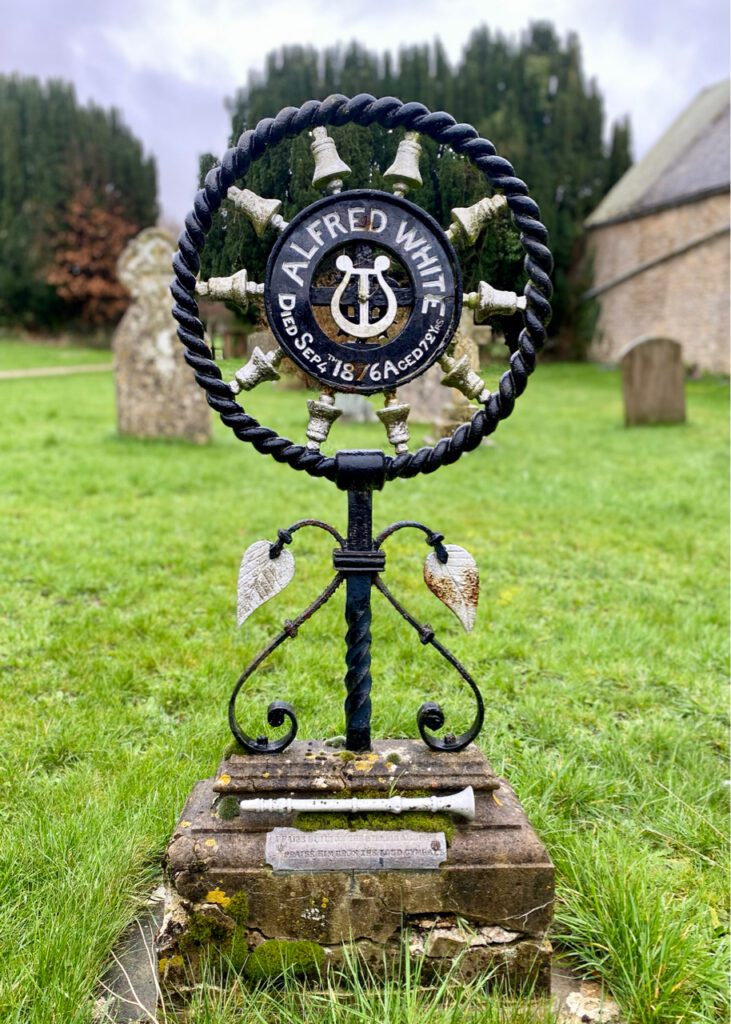
The grave of Alfred White was made by his son Frederick. It shows the ring of ten bells from the church with which he is associated and the pipe with which he led the village band.
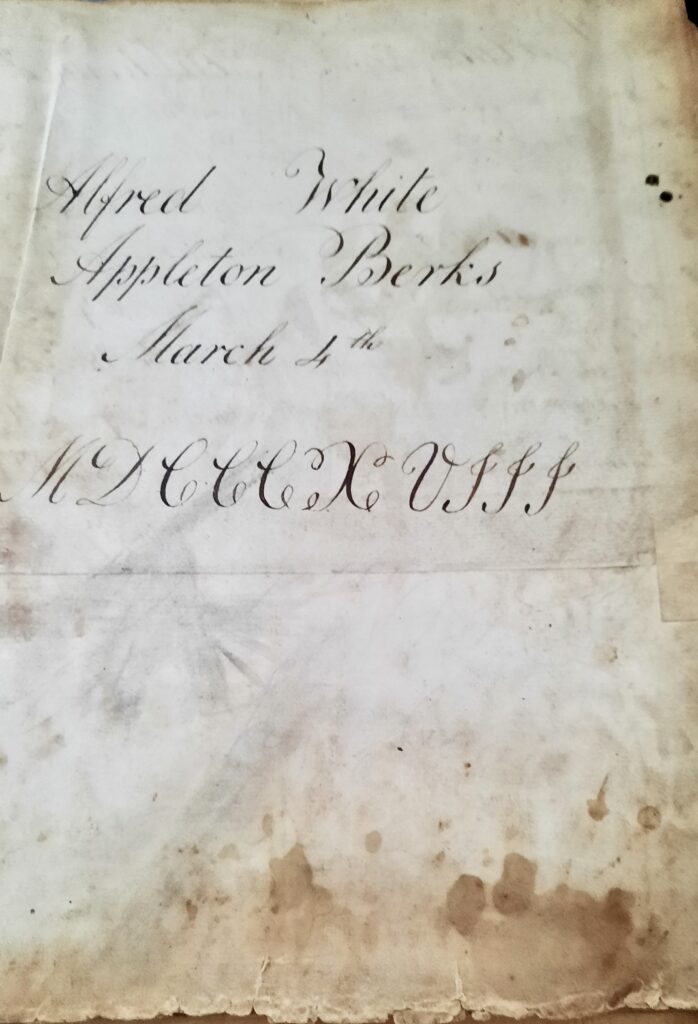
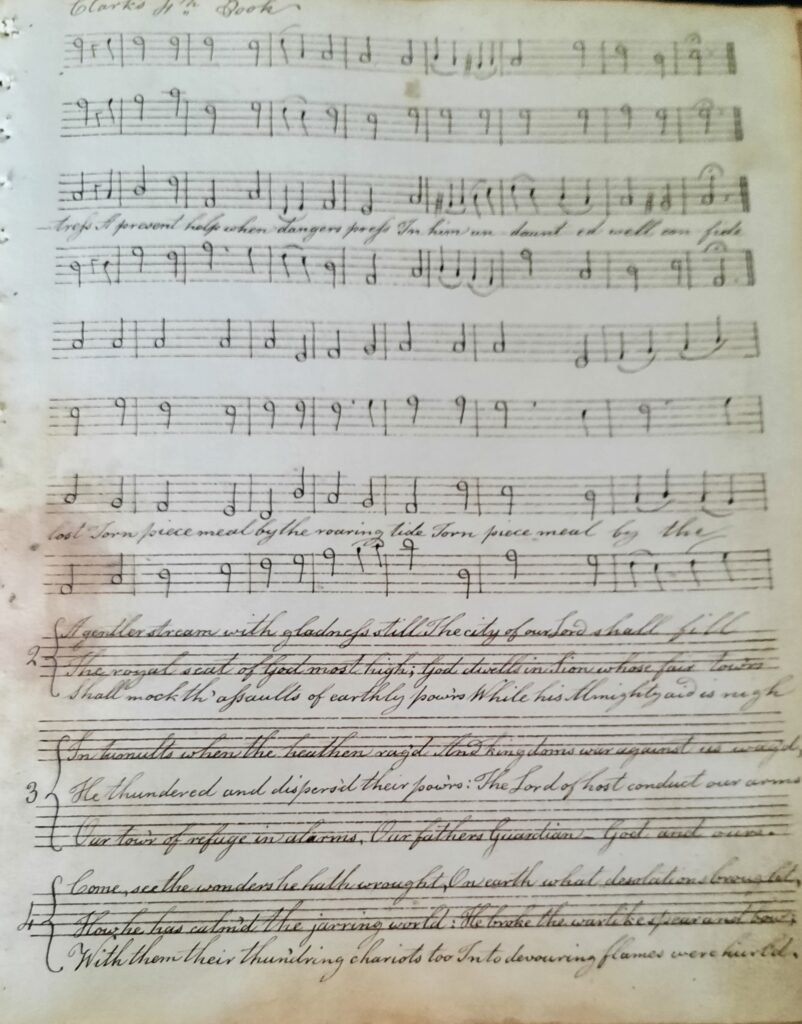
Alfred White’s original musical manuscripts.
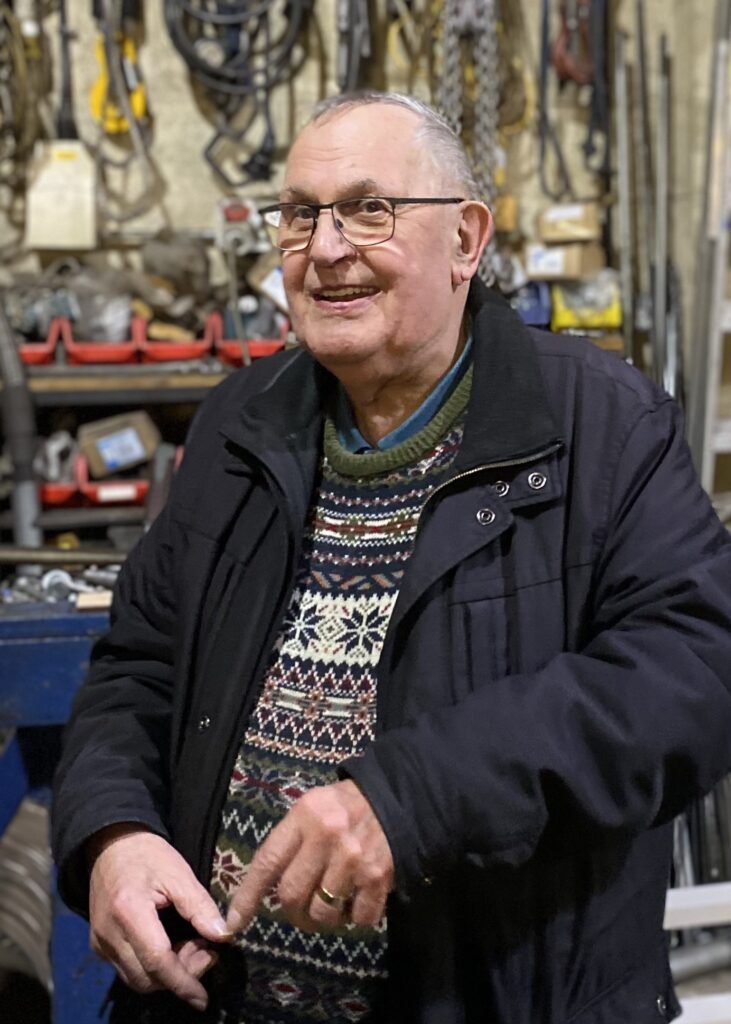
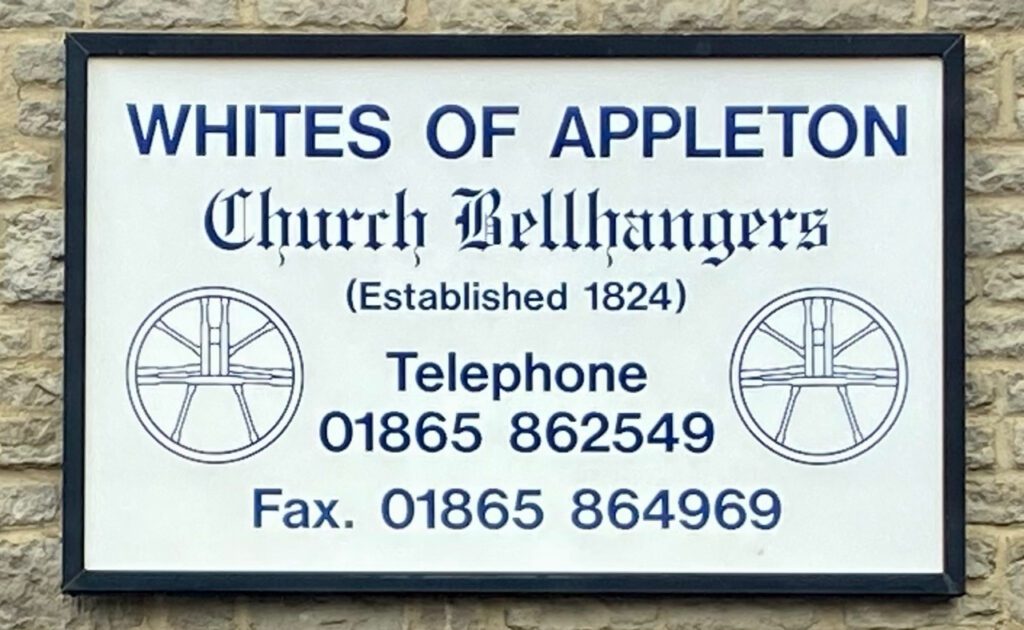
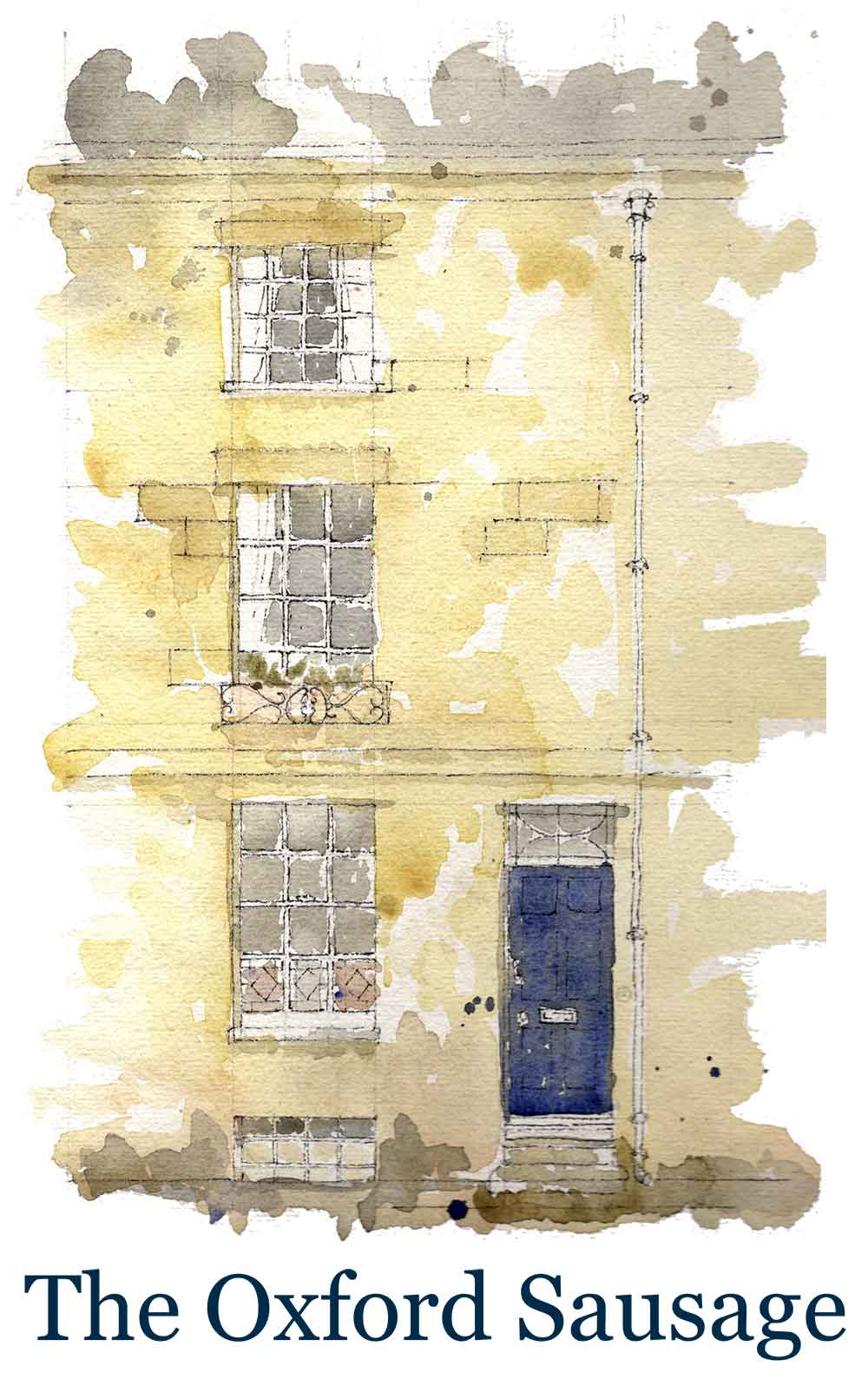
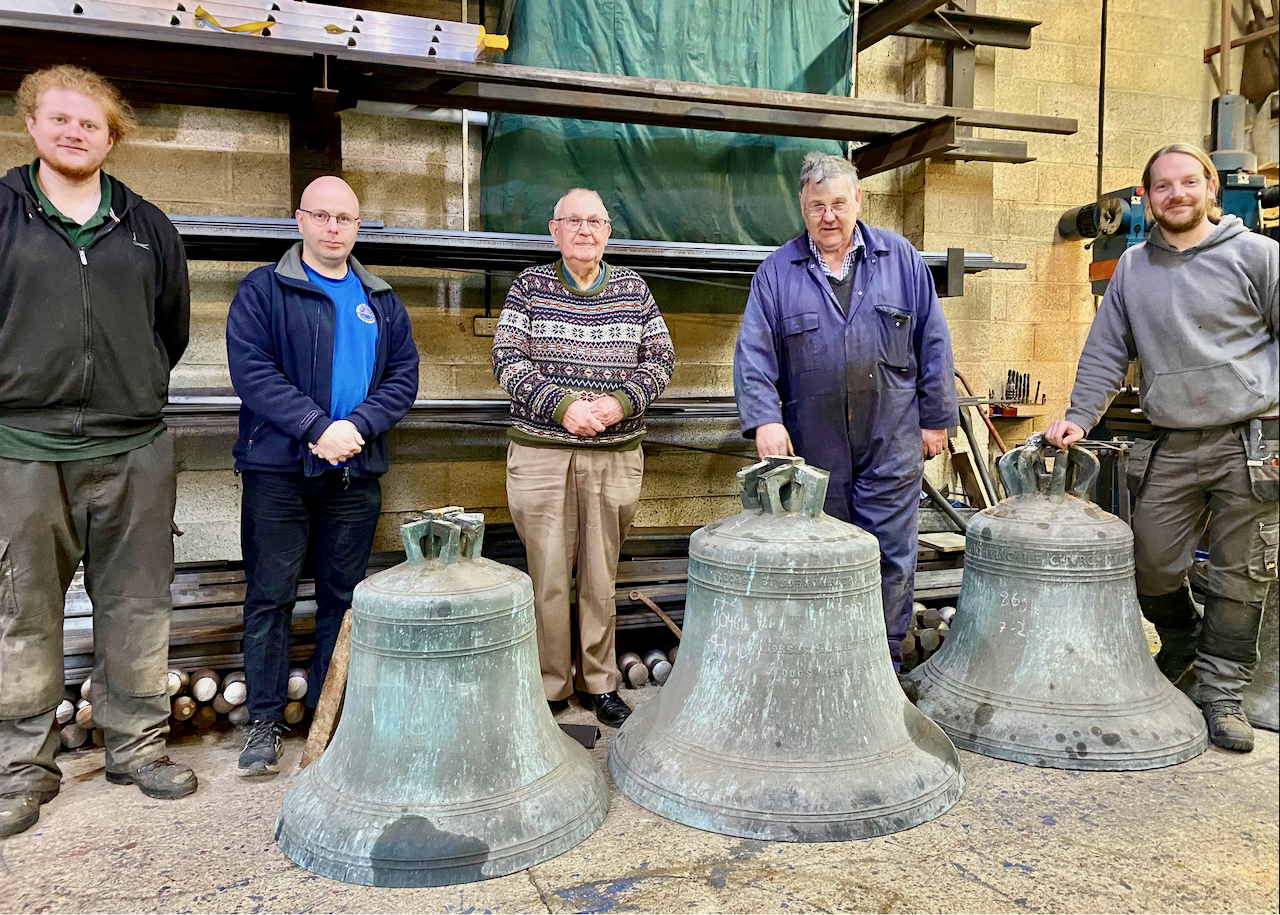
6 Comments
Join the discussion and tell us your opinion.
Brilliant piece! Thank you.
Utterly fascinating! So wonderful to read about this very essential craft at the heart of British heritage and the skill with which the White family carries on the tradition. Especially with the tragic loss of the Whitechapel Bell Foundry, it seems that so much of the craft of everything to do with these majestic bells is endangered. Thus it is particularly thrilling to see the dedication of the Whites to the amazingly complex world of bells and bell-hanging. Exquisite photos, too!
I enjoyed this post on a topic I never expected to learn about. Artisans from another era, still relevant, still in demand, still eye-openingly talented. Cheers for the AW’s of this world.
A brilliant story. Thank-you
Another lovely missal.
Felt like a real step back in time. Heartening to see.
More great stuff!
I can feel a parody of that lovely poem coming on.
“If you’ve a blog you want to write, and want to plug the name of WHITE…”